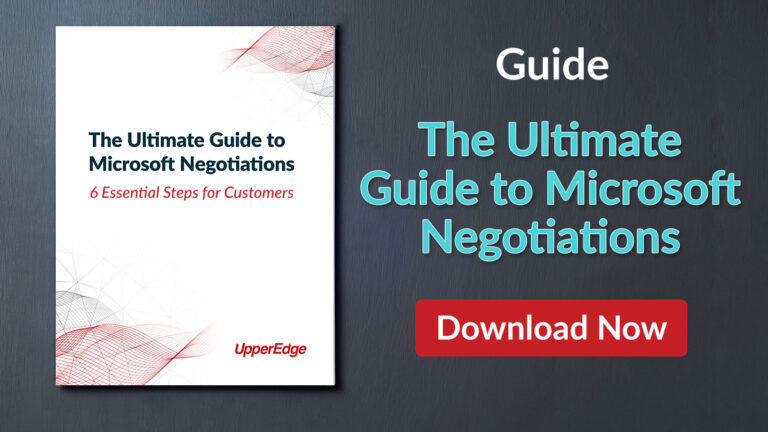- Erik Bullard
- Reading Time: 4 minutes

If you handle Microsoft Support for your organization, you may have contemplated moving from Premier to Unified Support or even made the switch already. Over the last several years, Microsoft has made a push to move customers away from their legacy Premier Support, citing the benefits that can be realized from their new Unified Support model.
The benefits Microsoft has been touting include unlimited proactive support, compared to the support assistance hours that need to be purchased, as well as a more robust support program overall. Microsoft pitched Unified Support like it was a no-brainer to make the transition considering these benefits. In reality, customers have been forced to either adopt the new Enterprise model or find an alternative to direct Microsoft support.
Below is an explanation of what Microsoft’s Unified Support model has looked like in the past and what changes have been made with the introduction of the new Unified Enterprise Support model.
Understanding the “Old” Unified Support Model
While we have worked with organizations that have considered, or even moved to, a third-party support model, Microsoft knows that there is a “value” that only they can sell you on: the ability to work with Microsoft directly on support issues, removing the need for any middleman that could delay or degrade support. They will use fear of the unknown, in addition to other negotiation tactics, to motivate organizations to go where they want them to go.
When compared to Premier Support, Unified Support will likely be more expensive and have less transparency into the specific resources that are available to you. Legacy Premier agreements would clearly outline the hours, services, and resources that you are entitled to. Of course, the costs of these services can vary, but you are at least able to drive a fixed level of support for a fixed cost.
Unified Support fees are based on a percentage of your organization’s existing spend with Microsoft. Based on this model, it’s easy to see how escalating Microsoft user, server and Azure fees lead to an increased Unified Support cost as well. This is compounded even more so when Microsoft actually increases the pricing associated with your underlying purchases and subscriptions.
If you are already a Unified Support customer, I’m sure you’ve noticed your fees increasing year-over-year. For those of you who historically have worked on large, on-premise software agreements, this might be ringing some “maintenance fees” bells. As such, it is key to understand how the introduction of the Enterprise Support model has changed the structure of these existing fees.
The New Change to Be Aware Of with Unified Enterprise Support
While the transition from Premier to Unified Support has been going on over the last several years, Microsoft has also been working behind the scenes to actually change the way that Unified Support is offered.
Initially, several tiers of Unified Support were available, including Core, Advanced and Performance. Each of these tiers came with varying degrees of available services, problem resolution and response time SLAs among other features. Of course, there were different fees associated with each tier of support as well, and the percentages that are applied to your existing spend would be raised as you move to more robust tiers.
With the new Unified Enterprise tier, Microsoft is removing your ability to focus on a level of support that is most suited for your needs. You will no longer be able to choose Core support if having an 8-hour response time for standard incidents is sufficient or be able to consider Advanced support if you need a reduced 30-minute response time for critical issues or incidents. Instead, deals with these legacy Unified Support tiers have been going away.
Many organizations are not even aware that the structure of their Unified Support fees is changing. Microsoft has mastered hiding the name change by instead focusing customers on some of the improvements being offered when compared to Unified Support in the past.
There is truth to these improvement claims. For example, the Enterprise model includes a reduced 15-minute response time for Azure critical support issues. However, there are things that Microsoft is not saying about the new support model unless they are pushed to do so.
One of the hidden complexities of the Enterprise model is the fact that different percentages that were applied to an organization’s existing spend under Core, Performance and Advanced tiers are going away. Instead, there is a graduated structure that applies different percentages based upon varying thresholds of spend across user, server and Azure fees. For many enterprises, this change ends up resulting in higher percentages used as the baseline to derive their support fees.
Additionally, Microsoft will rationalize not providing longer-term commitments with Unified Enterprise Support because organizations will naturally receive benefits, like the enhanced level of support and the application of reduced percentages as their overall spend profile, with Microsoft fee increases.
The Bottom Line
For customers who understand the changes, Microsoft has been simply making the older tiers unavailable and forcing organizations to adopt Unified Enterprise, much like the initial move from Premier to Unified. While these changes may be less overtly obvious than they were moving from Premier to Unified in the past, Microsoft is still imposing big changes in the model with Unified Enterprise.
When negotiating your new Unified Enterprise Support agreement with Microsoft, it is critical that you achieve the right level of transparency, protections and flexibility to ensure your organization is set up for success at the negotiation table. UpperEdge helps clients negotiate these agreements every day. Contact us to learn how our Microsoft advisors can support you.
Related Blogs
Strategic Microsoft Renewal Scenarios: How to Prepare and Stay in Control
Microsoft’s Recent Price Increases: What You Need to Know and How to Overcome Them
Microsoft and Google Are Forcing Customers to Adopt AI at a Premium Price: What Customers Need to Know
About the Author

